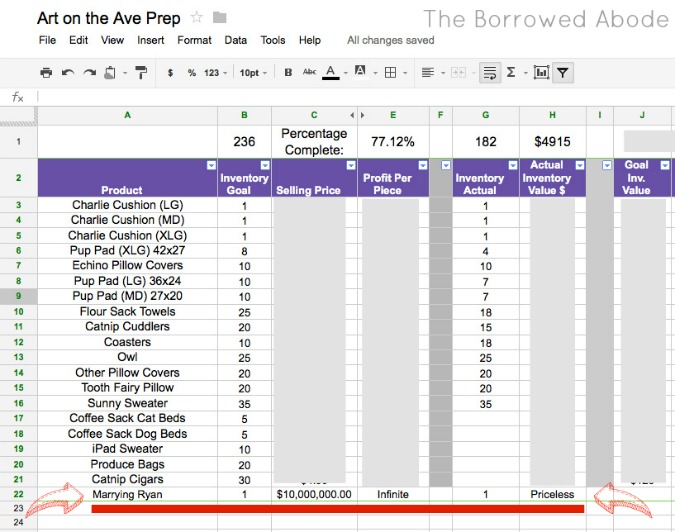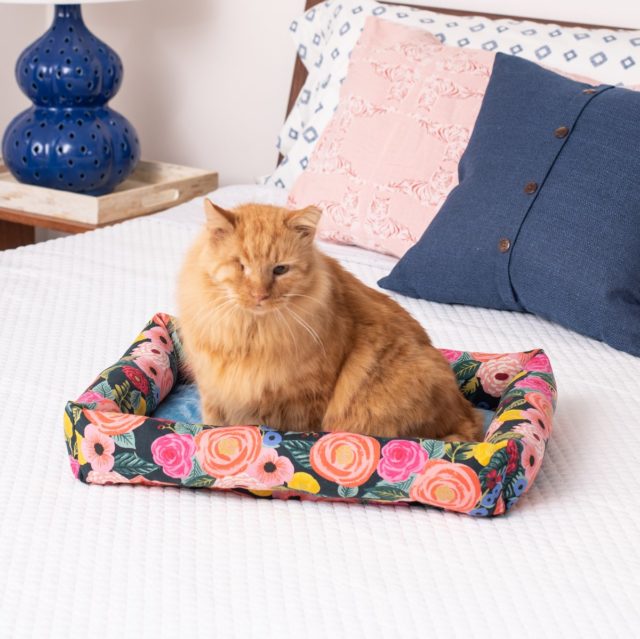Unrelated Intro: I’m here to say we weathered the Hurricane-Turned-Frankenstorm-Turned-Post-Tropical-Depression-Sandy just fine. I’m thankful for that, yet so sad for the people and businesses of New Jersey, New York, Connecticut, the Outer Banks, Haiti, and more who were devastated. I will be looking for a related charity for Janery to donate a portion of holiday proceeds to. Feel free to share suggestions in the comments below.
I didn’t get to have a “snow day” though our office was closed Mon & Tues. I had to work from home; October is our busiest month, and after a 13 hour workday yesterday I’m happy that November is here. Unfortunately I’m now getting sick. On the up side, I discovered that I’d written this post after Art on the Avenue – and never shared it! So here you go, unexpected bonus post 🙂
Two weeks before Art on the Avenue I asked you all “how much product shouldyou create for a craft fair?” I’d like to share, after the fact, my answers to that very question.
In short, I think you should only create what you are able to without overextending your finances or your health. Give yourself a cutoff date, say 2 days before the show, and whatever you’ve got then – that’s all you’re going to have.
I ended up sewing $4500 worth of merchandise, or 180 items, including:
New and improved Merlin Mats (formerly known as Puppy Pads), Catnip Cuddlers, Charlie Cushions (my long awaited “ultimate dog bed”), Tooth Fairy Pillows, Stuffed Owls, Reversible Waterproof Coasters, Flour Sack Towels, Pillows of all sorts, Sunglasses Sweaters.
Here’s the products on my “wish list” that I was not able to produce in time:
Catnip Cigars, Coffee Sack Dog Beds, Coffee Sack Cat Beds, iPad Sweaters, Produce Bags, Business Card Cases.
To help me track my preparation and plan my ideal product list, I created a Google spreadsheet, which you can see below. It listed each type of product, the goal production amount, selling price, and profit. Then I added a column for Inventory Actual (i.e. how much I’d created) as well as the actual inventory value (based on selling price) for each collection of products.
In the top row I had some of my goals and totals calculating so that I could keep an eye on my overall progress. It was really helpful to have such a quick visual tool.
Not Shown Below: At Ryan’s suggestion, I also set up columns that showed my profit-per-hour for each product. I was shocked to see that some of my products are so time-consuming that they amount to about a $5 profit per hour, vs others which amount to more like $30 per hour. From a purely profit-focused standpoint, I should focus on the more profitable-per-hour items, but that doesn’t take into account other factors, such as the need to have a variety of products in your booth at a show.

Back to the spreadsheet pictured. After the show I grabbed a screen shot of it for this post, only to discover that someone *cough* had inserted another product line at the bottom. See the last line, highlighted in red. 😉
I was able to use the chart to play around with scenarios, too and see how increasing or decreasing the quantity of one product could impact my overall goal.
After not having enough variety and quantity at Viva Vienna, my first show, I was just so worried I wouldn’t have enough different types of products and/or not enough of each product that I just kept sewing up until midnight the last night.
In the end I sold about 40% of my products. I was thrilled, because I was able to give myself a nice paycheck, but also because I had enough product left over to stock my shop with. (I’m still photographing, so it’s not stocked just yet. . . )
Therefore, I think that a good ballpark amount for handmade products with my price points would be $3,000 in inventory and at least 8 different products. Sure, if you can do more, that’s great. And if the date approaches and you don’t have enough, give yourself a break. Stop production a few days ahead so that you can focus on booth design and signage. That’s just as important.
So, for my next show, I will set a goal of $3,000 in product, and I’ll cut off production no matter what at 3 days pre-show. If I create that and have time to spare, I’ll make a little more. But either way, three days is the cutoff. No more sleepless nights for us!




4 Comments
So, so smart. I am impressed.
Interesting stuff to think about! thanks, Jane.
Great post, Jane! I really wish I could figure out how to make a spreadsheet like this for my products, but never know how to calculate the labor portion for artwork. Creating an original illustration can take days/weeks, but then there isn’t much time involved to have the reproductions printed out, so I haven’t been able to figure out how to calculate how much labor goes into a single print. Hmmm.
Thanks for sharing about your craft sale. I loved hearing what you went through because I’ve been there a couple of times in my home and then in the club house in my community. It is so much work. Be careful, I got sick every year after our sales. Ended up in the hospital. I want to do it again but not until I have all my inventory finished and know how I will display all. If it takes me a year that’s ok. I want to enjoy myself and do it right. Good luck to you and all your friends and parents!!!!